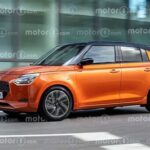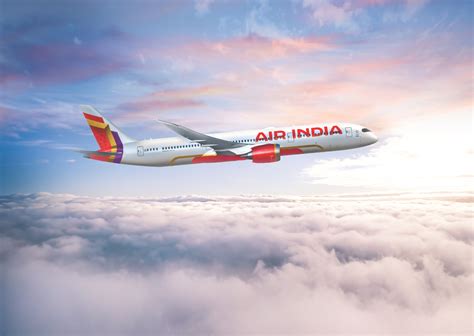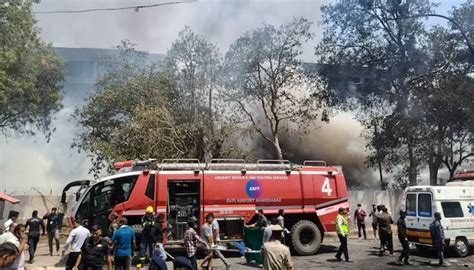
Tesla’s long-awaited robotaxi reveal has left many surprised, showcasing a vehicle design and operational concept significantly different from initial expectations and industry norms. Rather than a futuristic, radically redesigned autonomous vehicle, Tesla unveiled a model heavily based on existing vehicle components and focused on maximizing cost-effectiveness for ride-hailing services.
The presentation, largely devoid of technical specifications and concrete timelines, emphasized a minimalist design and a user experience tailored for autonomous operation. This approach contrasts sharply with the more ambitious, purpose-built robotaxi prototypes previously showcased by competitors like Cruise and Waymo. The Tesla robotaxi, as unveiled, appears to be a modified version of a traditional car, raising questions about its ability to compete effectively in the rapidly evolving autonomous vehicle market.
Tesla CEO Elon Musk presented the robotaxi as a key component of the company’s future, envisioning a network of autonomous vehicles providing affordable transportation. However, analysts and industry experts remain skeptical, citing regulatory hurdles, technological challenges, and the lack of detailed information about the vehicle’s capabilities. The absence of a steering wheel or pedals, while aligned with the vision of full autonomy, requires regulatory approval that is far from guaranteed in most jurisdictions. The reveal has sparked considerable debate about Tesla’s strategic direction and its ability to deliver on its promises in the autonomous vehicle space.
The Tesla robotaxi’s design prioritizes efficiency and cost reduction. “Our vision is to create a dedicated robotaxi that is optimized for autonomy,” Musk stated during the presentation, highlighting the company’s commitment to affordability. This focus is evident in the vehicle’s minimalist interior, designed for ease of cleaning and maintenance. The exterior design, while not revolutionary, incorporates elements intended to enhance safety and visibility for pedestrians and other road users.
However, the lack of specific details about the robotaxi’s sensor suite and autonomous driving system has fueled concerns about its capabilities. Tesla has long relied on a vision-based approach to autonomous driving, using cameras and neural networks to perceive the environment. While the company has made significant progress in this area, it has faced challenges in handling complex scenarios and adverse weather conditions. Competitors like Waymo and Cruise employ a more sensor-rich approach, incorporating lidar and radar to provide a more comprehensive and robust perception system.
The regulatory landscape for autonomous vehicles remains uncertain. Many jurisdictions are still grappling with how to regulate these vehicles, and it is unclear when and where Tesla’s robotaxi will be allowed to operate without human supervision. The absence of a steering wheel and pedals further complicates the regulatory approval process, as it deviates from existing vehicle safety standards. Tesla will need to convince regulators that its robotaxi is safe and reliable before it can deploy it on public roads.
Analysts have expressed mixed reactions to the Tesla robotaxi reveal. Some see it as a pragmatic approach to entering the autonomous vehicle market, while others question its competitiveness. “Tesla’s robotaxi is a bold move, but it faces significant challenges,” said one industry analyst. “The company needs to demonstrate that its vision-based autonomous driving system is capable of handling the complexities of real-world driving conditions.”
The success of Tesla’s robotaxi depends on several factors, including regulatory approval, technological advancements, and market acceptance. The company needs to overcome these challenges to realize its vision of a network of autonomous vehicles providing affordable transportation. The robotaxi reveal has provided a glimpse into Tesla’s future, but it remains to be seen whether the company can deliver on its promises. The approach taken by Tesla seems more akin to a ride-hailing service with a dedicated vehicle, rather than a groundbreaking leap in autonomous technology.
The vehicle’s design, while pragmatic, has drawn criticism for its lack of innovation. Many had anticipated a more radical departure from traditional car designs, similar to the purpose-built robotaxis being developed by other companies. The Tesla robotaxi, in contrast, appears to be an evolution of existing Tesla models, with modifications tailored for autonomous operation. This approach may be more cost-effective, but it also raises questions about the vehicle’s ability to compete with more advanced robotaxis in the long run.
The absence of detailed technical specifications has also fueled speculation about the robotaxi’s capabilities. Tesla has been tight-lipped about the vehicle’s sensor suite, computing power, and autonomous driving software. This lack of transparency has made it difficult to assess the robotaxi’s potential and compare it to competing offerings.
The regulatory hurdles facing Tesla’s robotaxi are significant. The absence of a steering wheel and pedals means that the vehicle will not meet existing safety standards in many jurisdictions. Tesla will need to work closely with regulators to develop new safety standards that accommodate fully autonomous vehicles. This process could take years, and there is no guarantee that Tesla will be successful.
Despite these challenges, Tesla remains optimistic about the future of its robotaxi. The company believes that its vision-based autonomous driving system is capable of handling the complexities of real-world driving conditions. Tesla also has a strong brand and a loyal customer base, which could give it a competitive advantage in the autonomous vehicle market.
The Tesla robotaxi reveal has sparked a debate about the future of transportation. Some believe that autonomous vehicles will revolutionize the way we travel, making transportation safer, more efficient, and more affordable. Others are more skeptical, citing concerns about safety, security, and job displacement. The Tesla robotaxi is just one example of the many autonomous vehicle projects underway around the world. As these projects mature, they will likely have a profound impact on our lives.
Tesla’s autonomous ambitions have been well-documented, with Musk repeatedly predicting full self-driving capabilities within a short timeframe. These predictions have consistently been pushed back, leading to increased scrutiny of Tesla’s autonomous technology. The robotaxi reveal, therefore, was seen as a critical opportunity for Tesla to demonstrate its progress and regain investor confidence.
The chosen design path reflects a strategic shift towards practicality and cost-effectiveness, likely influenced by the high costs and technological challenges associated with developing completely new vehicle platforms. By leveraging existing components and manufacturing processes, Tesla aims to bring its robotaxi to market more quickly and at a lower cost.
However, this approach also carries risks. The robotaxi’s resemblance to a conventional car may limit its appeal to consumers who are looking for a more innovative and futuristic transportation experience. Furthermore, the reliance on a vision-based autonomous driving system may put Tesla at a disadvantage compared to competitors who are using more sensor-rich approaches.
The unveiling event lacked the detailed technical explanations that many industry observers were hoping for. Musk focused instead on the overall vision and the potential benefits of the robotaxi service. This approach may have been intended to appeal to a broader audience, but it left many technical questions unanswered.
The success of Tesla’s robotaxi will depend on its ability to navigate the complex regulatory landscape. The company will need to convince regulators that its autonomous driving system is safe and reliable, even in the absence of human oversight. This will require extensive testing and validation, as well as ongoing monitoring and maintenance.
The economic implications of Tesla’s robotaxi are also significant. If successful, the service could disrupt the traditional taxi and ride-hailing industries, as well as the broader transportation sector. It could also lead to job losses for drivers and other transportation workers.
Tesla’s robotaxi reveal has generated both excitement and skepticism. The company’s vision of affordable and autonomous transportation is compelling, but it faces significant challenges in bringing this vision to reality. The success of the robotaxi will depend on Tesla’s ability to overcome these challenges and deliver a safe, reliable, and cost-effective service. The unveiling may not have been what everyone imagined, but it underscores Tesla’s continued push to revolutionize transportation and its willingness to take a different path than its competitors. “We believe this is the future,” Musk emphasized, painting a picture of a world reshaped by autonomous mobility. Whether this vision will materialize as planned remains to be seen, making the coming years crucial for Tesla’s robotaxi venture.
The company’s Full Self-Driving (FSD) system, which is currently available to a limited number of Tesla owners as a beta program, has been the subject of much debate. While Tesla claims that FSD is improving rapidly, it has also faced criticism for its performance in certain situations. The robotaxi will likely rely on an evolved version of FSD, raising questions about its readiness for full autonomy.
The competitive landscape for robotaxis is becoming increasingly crowded. Companies like Waymo, Cruise, and Zoox are all developing their own autonomous vehicles, and many of them have already begun testing their vehicles on public roads. Tesla will need to differentiate its robotaxi from the competition in order to succeed.
The environmental impact of Tesla’s robotaxi is another important consideration. If the robotaxi is powered by renewable energy, it could significantly reduce greenhouse gas emissions from the transportation sector. However, if it relies on fossil fuels, its environmental benefits would be limited.
The social implications of Tesla’s robotaxi are also worth considering. Autonomous vehicles could make transportation more accessible to people with disabilities and those who live in areas with limited public transportation. However, they could also exacerbate existing inequalities if they are not deployed equitably.
Tesla’s robotaxi reveal has raised many questions about the future of transportation. The company’s vision is ambitious, but it faces significant challenges in bringing this vision to reality. The success of the robotaxi will depend on Tesla’s ability to overcome these challenges and deliver a safe, reliable, and affordable service that meets the needs of consumers and society as a whole. The unveiled robotaxi appears to be more of a strategic adaptation of existing technology rather than a revolutionary breakthrough, highlighting the pragmatic approach Tesla is adopting in the autonomous vehicle arena.
The lack of a distinctive aesthetic design also sets the Tesla robotaxi apart from its competitors. While companies such as Cruise and Waymo have opted for futuristic, purpose-built designs, Tesla has chosen a more understated and familiar appearance. This decision may be driven by a desire to minimize costs and avoid alienating potential customers. However, it also raises questions about the robotaxi’s brand identity and its ability to stand out in a crowded market.
The technological underpinnings of the Tesla robotaxi remain largely shrouded in secrecy. While the company has provided some high-level information about its autonomous driving system, it has not disclosed many of the details that would allow industry experts to fully assess its capabilities. This lack of transparency makes it difficult to determine whether Tesla’s vision-based approach is truly competitive with the more sensor-rich approaches being pursued by its rivals.
The regulatory landscape for autonomous vehicles is constantly evolving. As governments around the world grapple with the challenges of regulating this new technology, Tesla will need to remain flexible and adapt its plans accordingly. The company’s ability to navigate this complex regulatory environment will be crucial to the success of its robotaxi.
The economic impact of Tesla’s robotaxi is difficult to predict. On the one hand, it could create new jobs in areas such as manufacturing, maintenance, and customer service. On the other hand, it could displace existing jobs in the transportation sector, such as taxi drivers and truck drivers. The net effect on employment will depend on a variety of factors, including the rate of adoption of autonomous vehicles and the policies that governments put in place to mitigate job losses.
The social implications of Tesla’s robotaxi are also uncertain. Autonomous vehicles could make transportation more accessible to people with disabilities and those who live in rural areas. However, they could also exacerbate existing inequalities if they are not deployed equitably. It is important to ensure that autonomous vehicles are used to benefit all members of society, not just a select few.
Tesla’s robotaxi reveal has sparked a wide-ranging debate about the future of transportation. The company’s vision is ambitious, but it faces significant challenges in bringing this vision to reality. The success of the robotaxi will depend on Tesla’s ability to overcome these challenges and deliver a safe, reliable, and affordable service that meets the needs of consumers and society as a whole. The reveal underscored that the path to full autonomy is fraught with complexities and requires a balance of technological innovation, regulatory compliance, and market readiness.
Frequently Asked Questions (FAQ)
1. What is the Tesla robotaxi, and what makes it different from other autonomous vehicles?
The Tesla robotaxi is Tesla’s proposed autonomous vehicle designed for ride-hailing services. Unlike some competitors developing purpose-built robotaxis with unconventional designs, Tesla’s robotaxi appears to be based on existing vehicle components, prioritizing cost-effectiveness and scalability. A key difference is Tesla’s reliance on a vision-based autonomous driving system (cameras and neural networks), whereas many competitors also incorporate lidar and radar for a more sensor-rich perception system. The lack of a steering wheel and pedals, while indicating full autonomy, requires regulatory approval. The vehicle is designed for ease of cleaning and maintenance to facilitate high utilization in a ride-hailing network. Tesla aims to create an affordable, autonomous transportation service, but the reliance on a vision-based system and the necessity of regulatory approval are key differentiators and challenges.
2. What are the key technological challenges Tesla faces in deploying its robotaxi?
Tesla faces several technological hurdles. The primary challenge is perfecting its vision-based autonomous driving system to handle complex real-world scenarios, adverse weather conditions, and unforeseen events. While Tesla’s neural networks have advanced, consistently achieving Level 4 or 5 autonomy (full autonomy without human intervention in most situations) remains difficult. Another challenge is sensor reliability and redundancy; unlike competitors using multiple sensor types (lidar, radar, cameras), Tesla’s vision-only system must demonstrate comparable or superior safety and reliability. Furthermore, the computing power required for real-time processing of visual data and decision-making in complex environments presents a significant engineering challenge. Finally, integrating and validating the entire autonomous driving system to ensure safe and reliable operation under all conditions is an ongoing and iterative process.
3. What are the regulatory hurdles for Tesla’s robotaxi, especially considering the absence of a steering wheel and pedals?
The absence of a steering wheel and pedals poses significant regulatory challenges. Current vehicle safety standards in most jurisdictions require driver controls. Tesla needs to demonstrate that its robotaxi can operate safely without human intervention and convince regulators to create new safety standards for fully autonomous vehicles. This involves extensive testing, validation, and data sharing with regulatory agencies to prove the system’s reliability and safety. Approval processes can vary significantly between countries and even within different regions of the same country, requiring Tesla to navigate a complex web of regulations. Furthermore, public perception and acceptance of fully autonomous vehicles without human controls will play a crucial role in regulatory decisions. Overcoming these hurdles will likely require years of lobbying, demonstrations, and collaboration with regulators.
4. How does Tesla’s robotaxi strategy compare to those of its competitors, such as Waymo and Cruise?
Tesla’s robotaxi strategy differs from competitors in several key aspects. While Waymo and Cruise are developing purpose-built robotaxis with unique designs and sensor suites (including lidar and radar), Tesla is leveraging existing vehicle components and a vision-based autonomous driving system. This approach is likely aimed at reducing costs and accelerating the deployment timeline. Waymo and Cruise have focused on geofenced areas for initial deployments, limiting their operational areas to well-mapped and controlled environments. Tesla, however, aims for broader operational capabilities with its robotaxi, potentially covering larger geographic areas. Furthermore, Tesla plans to integrate its robotaxi service into its existing ecosystem, leveraging its Supercharger network and customer base. The competitive landscape is evolving rapidly, and each company’s strategy reflects different assumptions about the future of autonomous transportation.
5. What are the potential economic and social impacts of Tesla’s robotaxi, if successfully deployed?
The economic and social impacts of Tesla’s robotaxi could be substantial. Economically, it could disrupt the traditional taxi and ride-hailing industries, potentially leading to job losses for drivers. However, it could also create new jobs in manufacturing, maintenance, and technology development. The affordability of transportation could increase, benefiting low-income individuals and those in underserved areas. Socially, robotaxis could improve mobility for people with disabilities and elderly individuals who cannot drive. However, there are also concerns about data privacy, cybersecurity risks, and the potential for increased traffic congestion if robotaxis are not properly managed. Equitable access to robotaxi services and appropriate regulations will be crucial to maximizing the benefits and minimizing the risks. Widespread adoption could also impact urban planning, reducing the need for parking spaces and potentially reshaping cityscapes.
6. What are the biggest risks associated with Tesla’s robotaxi venture?
Tesla’s robotaxi venture faces numerous risks. The most significant include technological challenges in achieving full autonomy, particularly with a vision-based system, regulatory hurdles in securing approvals for vehicles without driver controls, and competition from established players like Waymo and Cruise. Public acceptance of autonomous vehicles is also uncertain, and any high-profile accidents involving Tesla’s robotaxis could damage its reputation and slow down adoption. Furthermore, cybersecurity risks, such as hacking and remote control of vehicles, pose a significant threat. The high capital expenditures required for developing and deploying robotaxis, coupled with the uncertainty of regulatory approvals and market acceptance, create substantial financial risks for Tesla. Delays in achieving full autonomy or unexpected safety issues could significantly impact the venture’s success.
7. How reliant is the success of the robotaxi on the rollout and improvement of Tesla’s Full Self-Driving (FSD) system?
The success of the robotaxi is fundamentally intertwined with the rollout and improvement of Tesla’s Full Self-Driving (FSD) system. The robotaxi is essentially a platform that will utilize a highly advanced, fully autonomous version of FSD. Any limitations, safety issues, or regulatory roadblocks hindering FSD’s progress will directly impact the viability and timeline of the robotaxi project. Public perception of FSD’s safety and reliability, cultivated through its existing beta program, will significantly influence regulatory decisions and consumer confidence in the robotaxi. The continuous improvement and refinement of FSD through data collection and over-the-air updates are crucial for ensuring the robotaxi can navigate diverse driving conditions and unexpected scenarios. The ability to achieve true Level 4 or 5 autonomy with FSD is a prerequisite for the robotaxi’s commercial success.
8. What role does Elon Musk’s vision play in the development and direction of Tesla’s robotaxi?
Elon Musk’s vision is central to the development and direction of Tesla’s robotaxi. He has consistently championed the idea of fully autonomous vehicles and has set ambitious timelines for achieving this goal. His vision influences the overall strategic direction of Tesla, driving innovation and risk-taking in the autonomous vehicle space. Musk’s emphasis on a vision-based approach to autonomy, even amidst industry skepticism, reflects his confidence in Tesla’s technology and his willingness to challenge conventional wisdom. His pronouncements and predictions about the robotaxi’s capabilities and timeline significantly shape investor expectations and public perception. However, the pressure to meet Musk’s ambitious goals can also lead to accelerated timelines and increased risk-taking, potentially impacting safety and reliability.
9. What impact could the robotaxi have on urban planning and infrastructure?
If widely adopted, robotaxis could have a profound impact on urban planning and infrastructure. The reduced need for parking spaces could free up significant urban land for other uses, such as parks, housing, or commercial development. Traffic congestion could be reduced through optimized routing and coordination of autonomous vehicles. Public transportation systems could be redesigned to integrate seamlessly with robotaxi services, providing more flexible and efficient mobility options. The need for traditional traffic signals and road markings could be reduced, as autonomous vehicles communicate directly with each other and with the infrastructure. However, urban planners need to proactively address potential challenges, such as ensuring equitable access to robotaxi services, managing the flow of autonomous vehicles to prevent congestion, and adapting infrastructure to support the unique needs of robotaxis.
10. What are some ethical considerations surrounding the use of Tesla’s robotaxi?
Ethical considerations surrounding Tesla’s robotaxi include algorithmic bias, data privacy, and safety dilemmas. Algorithmic bias in the autonomous driving system could lead to discriminatory outcomes, such as disproportionately affecting certain demographic groups. Data privacy is a concern, as robotaxis collect vast amounts of data about passengers and their movements. Safeguarding this data from unauthorized access and misuse is crucial. Safety dilemmas, such as unavoidable accident scenarios, raise difficult ethical questions about how the autonomous system should prioritize different outcomes (e.g., minimizing harm to passengers versus pedestrians). Transparent and ethical decision-making processes are essential for addressing these concerns and building public trust in autonomous vehicle technology.









